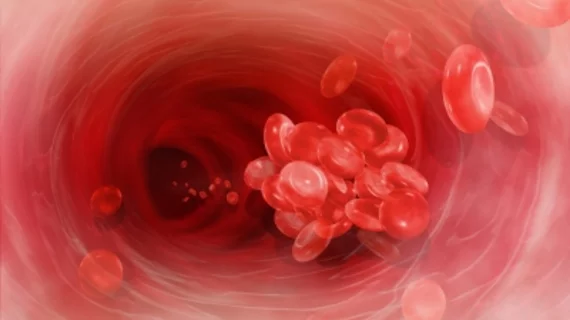'Delicate' hemostasis puts newborns at heightened risk for thrombosis
A Russian study that analyzed the process of blood coagulation in humans at different life stages has found hemostasis in newborn babies is particularly delicate—something that, paired with other common risks, can boost an infant’s risk of thrombosis early in life.
Coagulation system disturbances are one of the world’s leading causes of infant death and disability, study author Anna N. Balandina, PhD, and colleagues wrote in Pediatric Research, and the risk of major bleeding is heightened in the case of preterm or complex births. While mass screening for hemostasis disorders in young children is impractical—the incidence of such complications is typically low—testing in high-risk patients is also difficult, since current lab instruments aren’t sensitive enough to pick up on those dysfunctions in the womb.
“Preterm newborns are at thrombohemorrhagic risk during the early neonatal period,” Balandina and co-authors said in the journal. “Taking into account the lack of informative tools for the laboratory diagnosis of hemostasis disorders in newborns, our goal was to determine the baseline values of thrombodynamics and platelet functional activity in healthy-term and moderately-preterm newborns during the early neonatal period.”
The researchers achieved that by comparing the condition of the coagulation system in adults to that of newborns, both full-term and preterm. The team assessed coagulation using standard coagulation assays and various thrombodynamics, and platelet functional activity was estimated with flow cytometry.
Balandina et al. soon found hemostasis in newborns was “substantially different” from that of adults, with babies facing an increased risk of thrombosis. Platelets, too, were less functional in young patients, exhibiting a reduced ability to activate when needed.
“Granule release, phosphatidylserine exposure and the ability to change shape upon activation were decreased in the platelets of moderately preterm newborns,” the authors wrote. “The platelet function remained at the same level over the first four days of life, whereas the hypercoagulation became less pronounced.”
Balandina and colleagues said hemostasis seems to exist in a “unique state of balance” in all newborns, and coagulation patterns seemed similar in preterm and full-term babies. Some kids born ahead of their due date, though, saw further reduced functional platelet response.
The authors said they’re moving forward with their work, which is funded by the Russian Science Foundation, to study coagulation in a group of extremely preterm infants. Balandina said the team’s ultimate goal is to develop screening protocols for catching coagulation complexities earlier in a child’s life.

